Nested NSX Upgrading Nsx 6.0.5 to 6.1.2
In earlier blogposts I described how I build my nested NSX lab. This environment was based on NSX version 6.0.5 and in this post I will briefly show you how you can easily upgrade your NSX environment, in this case we will upgrade to version 6.1.2. Luckily the documentation of VMware is up-to-date which should make this proces pretty easy. Let’s start with the NSX Manager. NSX-Manager Before we actually start, make sure your filename of the upgrade bundle ends with tar.gz, otherwise the upload will fail. I had to rename the file; from: VMware-NSX-Manager-upgrade-bundle-6.1.2-2318232.tar _to: VMware-NSX-Manager-upgrade-bundle-6.1.2-2318232.tar.gz
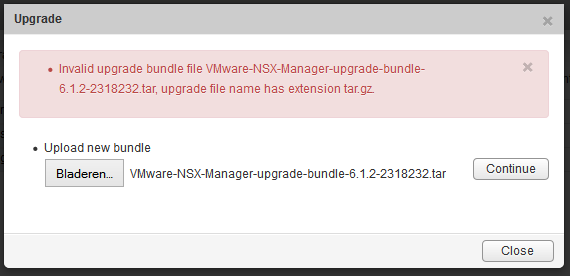
Login to the NSX Manager & click the upgrade button.

In the upgrade page, you’ll find another upgrade button in the top right corner, click it and in the new screen, select the upgrade file.
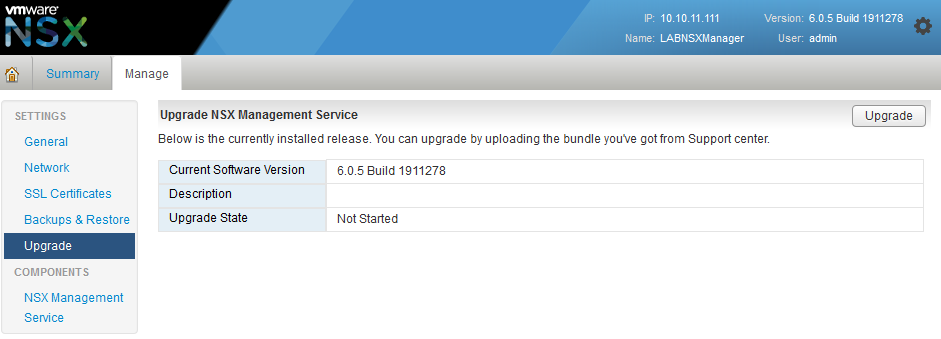
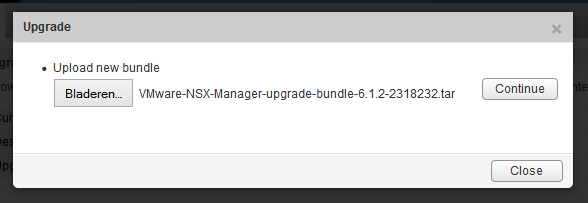
After choosing the right file, click continue, now you have to wait, while the file is being uploaded.
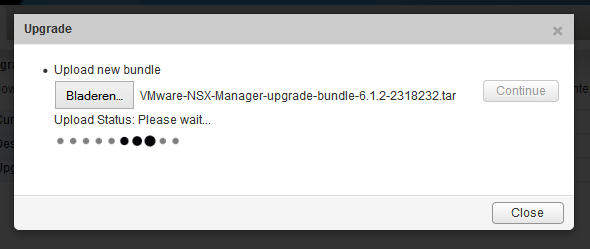
If everything wen well, you should see a screen confirming the upgrade from 6.0.5 to 6.1.2 and a question about enabling SSH. I enabled SSH and clicked upgrade.
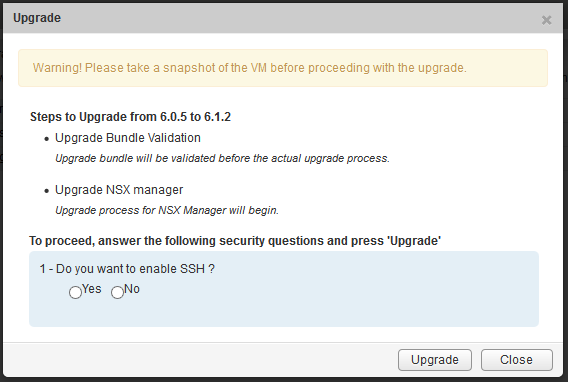
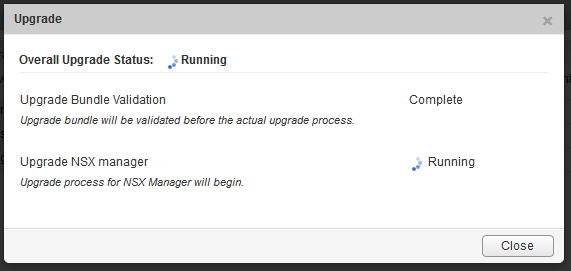
After the upgrade you will be redirected to the login page, login and check the version number in the upper right corner.

NSX Controllers
The next step is to upgrade the controllers, log in to the vSphere webclient and go to Networking & Security and click the Installation option on the left side. Make sure the Management tab is selected and you should see on the right side “Upgrade Available”, click it and click yes, that you are willing to upgrade the controllers.

In the screen below the manager, you see that the controller is being upgraded.

If everything went fine, the upgrade status column should dissappear and the new version is displayed, also the upgade available link in the upper rigt corner should be gone.
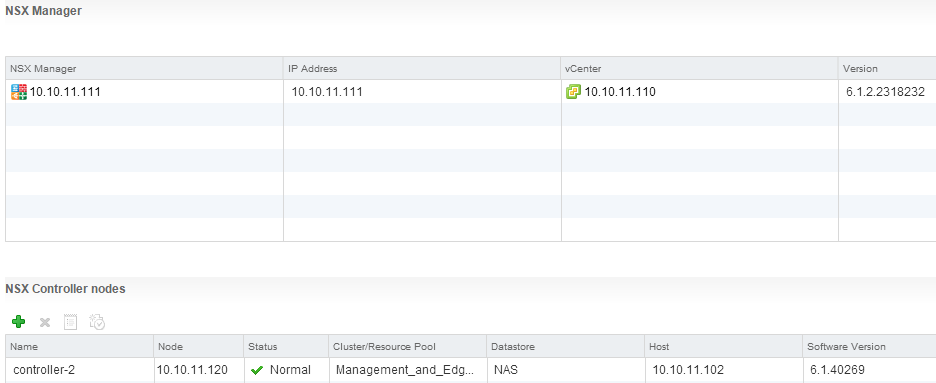
Host upgrade
Go to the “Host Preparation” tab and you should see that there is an update available.

Click update near the host that you want to upgrade. The host is getting upgraded and will be rebooted when the installation is done. However if you have just one host in the cluster, like in my lab environment, this will need some manual interaction. This is because VMware has no other hosts where the workload can be migrated to.

Go to host & clusters and you will see, that the host need a reboot.
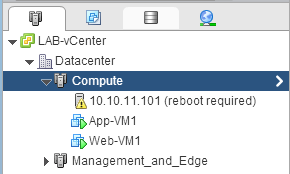
I simply shut down the VM and rebooted the host, I started with the one in the compute cluster. For the upgrade of the host in the management cluster I temporarily moved the compute host to this cluster and let it run the NSX Manager, till the second host was also upgraded. These steps took me a while. I also increased the memory of the NSX Manager to 6GB it seems the upgrade made it a bit slower. If everything went well you should see this eventually.

NSX Edge upgrade
The last part of this upgrade is the NSX Edges, this means the distributed router and the edge. As mentioned in earlier posts in my opinion the distributed router should gets his own section. Click the appliance you would like to upgrade, order doesn’t matter and select from the action menu “Upgrade Version”.


It is nice to notice, that the upgrade of the Edge is an actual new installation;
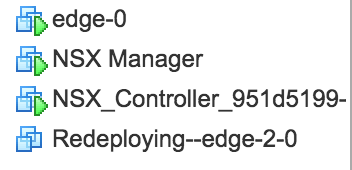
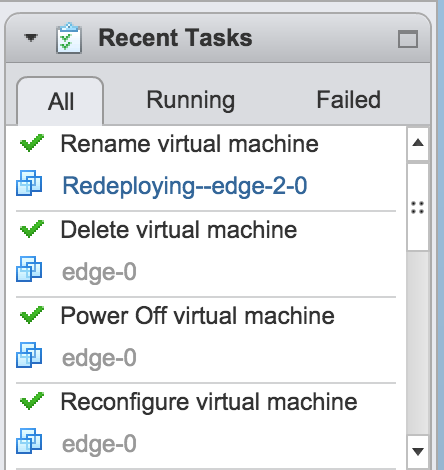
This is it, when all the NSX Edge devices (including the distributed router(s)) are up-to-date the upgrade is doen. As you can see upgrading a NSX environment consist just of a few basic steps, the only challenging step is the host-preparation, but that is due the lack of resources in my lab set-up. In production this would be easier.